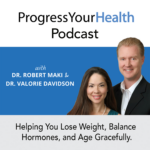
Painful intercourse is a very common complaint I get from patients going through or have gone through menopause. They do feel awkward speaking of vaginal dryness, especially with their male gynecologists. This is one of the most common symptoms of menopause, second to hot flashes and night sweats.
Menopause is an inevitable course of life that all women will go through. In menopause, the ovaries are going to reduce and ultimately stop making estrogen and progesterone. The average age of menopause is 51.5 years of age. Also, commonly some women have had a complete hysterectomy and oophorectomy which is complete removal of the uterus and ovaries.
This can be due to many health conditions such as Endometriosis, heavy/frequent bleeding, or fibroids. These women will go through what is called, surgical menopause,’ but either way, menopause can have a variety of symptoms.
Unfortunately, dry, painful sex commonly occurs before, during and after menopause. A female may opt to take hormone replacement during menopause, or she might not choose to take hormones because she may not be a good candidate.
This can be due to personal reasons, health conditions, family history, physician recommendations. Whether taking hormones or not for menopause, painful dry intercourse is a common symptom.
It should also be noted that perimenopausal women can also have vaginal dryness. As we get older, our hormones inevitably decline. Even women as young as the late 30’s to early 40’s can have pain with intercourse due to the slight drop in estrogen.
Estrogen feeds the vaginal cells. Immature vaginal cells are called Parabasal cells. Having estrogen in the system will help convert the parabasal cells into mature vaginal cells.
If you have vaginal atrophy, that means you have mainly parabasal cells in your vagina. If you have ever gotten the full report from your last pap smear, you will notice the report will say there is predominantly parabasal cells. The lack of estrogen in menopause is the culprit for painful intercourse and/or dryness.
Personal lubricants are the first line of choice for painful intercourse, which can be helpful. However, in vaginal atrophy, the walls of the vagina can become narrow. You still might experience pain even with the lubricant, or the vaginal tissues are very fragile, and the lubricant cannot protect from the tearing.
The next level of treatment is using estrogen topically. Your ObGyn may give you estradiol or Premarin cream/inserts for vaginal dryness. The problem with this is estradiol and Premarin are both very strong forms of estrogen.
They usually enter the bloodstream if you use them vaginally. Estradiol is ‘bioidentical,’ but it is the most potent form of estrogen we make. So estradiol may not be appropriate for you or intended to be used long term.
Premarin is made from pregnant horse urine and is not bioidentical. The entire ethical implications behind horse/animal treatment and Premarin is a whole other topic itself.
For the appropriate candidate using estriol (E3) vaginally can help hydrate the vaginal cells and make them more resilient to tearing. Estriol is the most gentle estrogen that our bodies produce. Estriol is bioidentical and very helpful for skin and mucous membranes like the vagina.
Unfortunately, your conventional doctor or ObGyn is not going to prescribe estriol for you. Now, this is where I am supposed to tell you: this information is intended for information only. It does not replace medical advice and it just at the disclosure of the reader.
There is a product I like from the company Bezwecken, which is called Hydration Cubes. That is precisely what they do; they hydrate the vaginal tissues by providing bioidentical estriol. It is meant to be inserted vaginally to convert the parabasal cells into mature vaginal cells.
Unlike estradiol, estriol is very gentle and meant only for the vaginal tissues. If you are having very painful and dry intercourse, insert one hydration cube vaginally at night for ten days.
After that, you will only need to use the estriol hydration cubes once to twice a week. Depending on the degree of vaginal atrophy, it should take about 4-6 weeks to take effect.
I hope this information has been helpful to you. If you would like more information on hydration cubes, visit our online store. Also, feel free to reach out and ask us questions or if you have your own personal stories. You can email us at [email protected]
The post Do You Have a Dry Vagina During Sex? | PYHP 034 appeared first on .
Discover the common and unfamiliar symptoms that you might be experiencing. Get access to cases of real women with hormonal conditions.

In this episode, we talk about hormone treatments for perimenopause and menopause. There is a vast distinction between perimenopause and menopause when it comes to treatment options. We often see women who are being treated for menopause when they are genuinely not in menopause. Meet Linda: Linda is a listener who sent us a question […]
Recently, Catherine posted a question on our website about Biest cream, and we knew this could interest our listeners. Biest is a combination of estriol and estradiol, one of the most common forms of estrogen therapy used in bio-identical hormone replacement. There are many doses, ratios, options, and methods of using Biest, so we thought […]
Welcome to the Progress Your Health Podcast! This is a podcast that helps you learn about balancing hormones, especially during perimenopause and menopause. We love hearing from our listeners. If you have a question, please visit our website and click Ask the Doctor a question. Let’s read Brigitte’s question! I have been listening and learning […]
In this episode, we talk about the difference between perimenopause and menopause. Both Dr. Maki and I (Dr. Davidson) have worked with women in perimenopause and menopause since 2004 and sometimes get a bit myopic and technical when it comes to explaining the differences. The other day, a patient of Dr Maki’s asked the question, […]
We recently got a great question from a listener and want to share it with you. This question is about a perimenopausal 51-year-old female. She is still menstruating and having confusion about her hormone testing and the hormone therapy that she is currently taking. She is experiencing some breast tenderness and irritability related to her […]
in this episode, we answered a listener’s question. We love questions from listeners. If you have a question, please visit our website and click Ask the Doctor a question. Here is the listener’s question: I have been perimenopause for at least 4 years now I am 47 and after completing a Dutch test with a […]